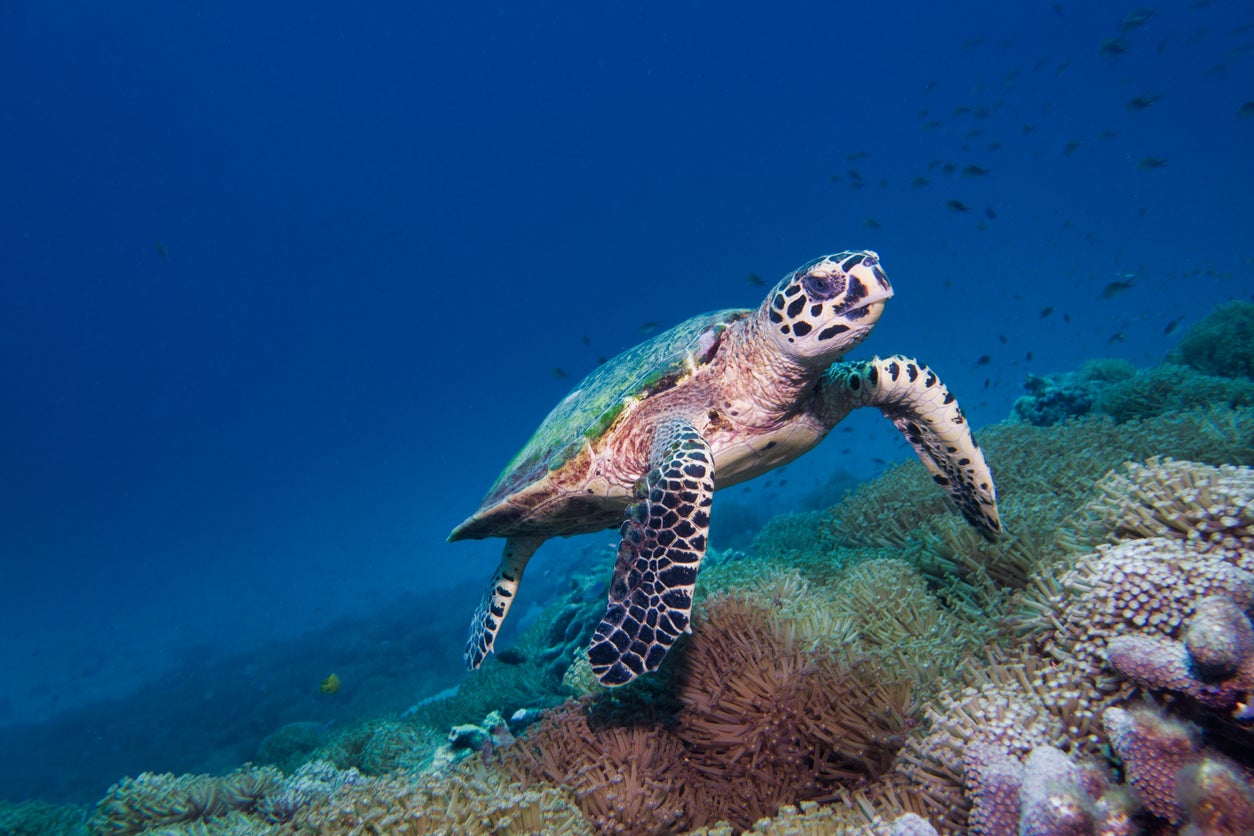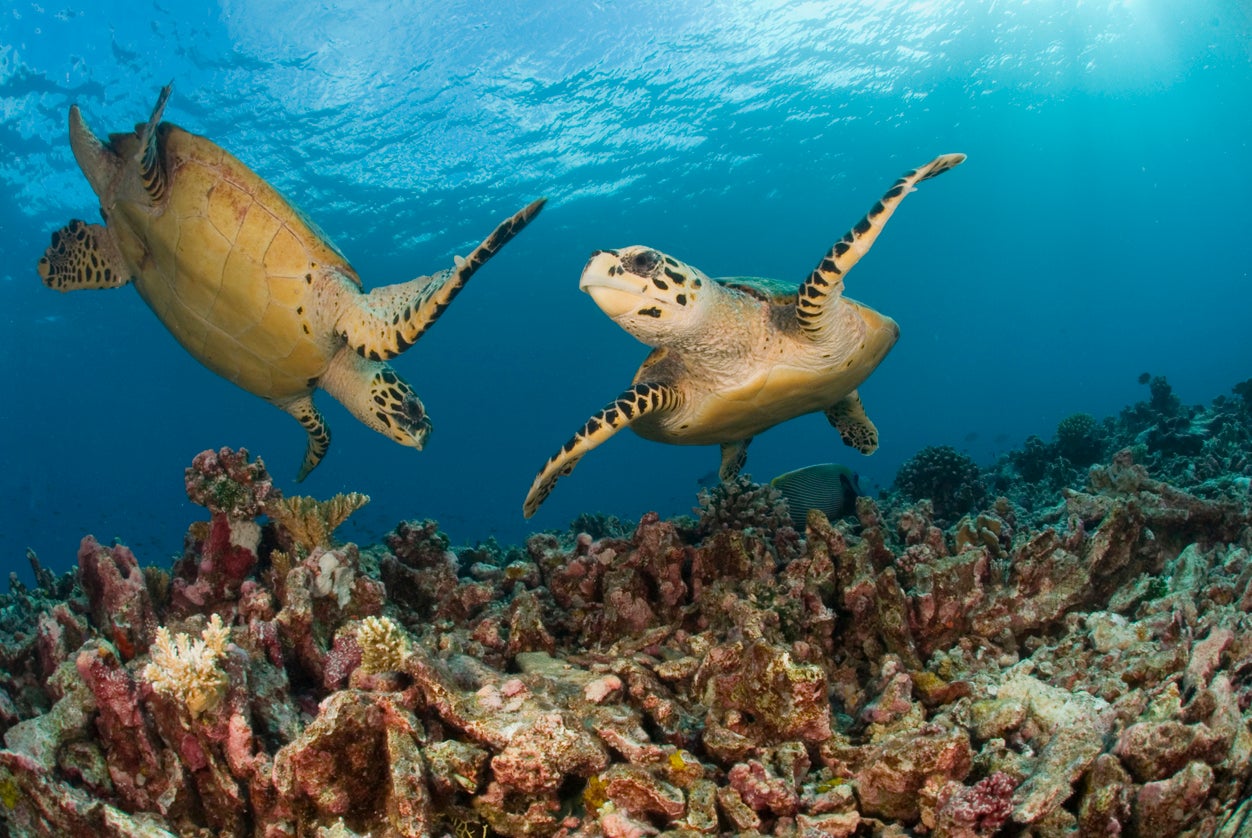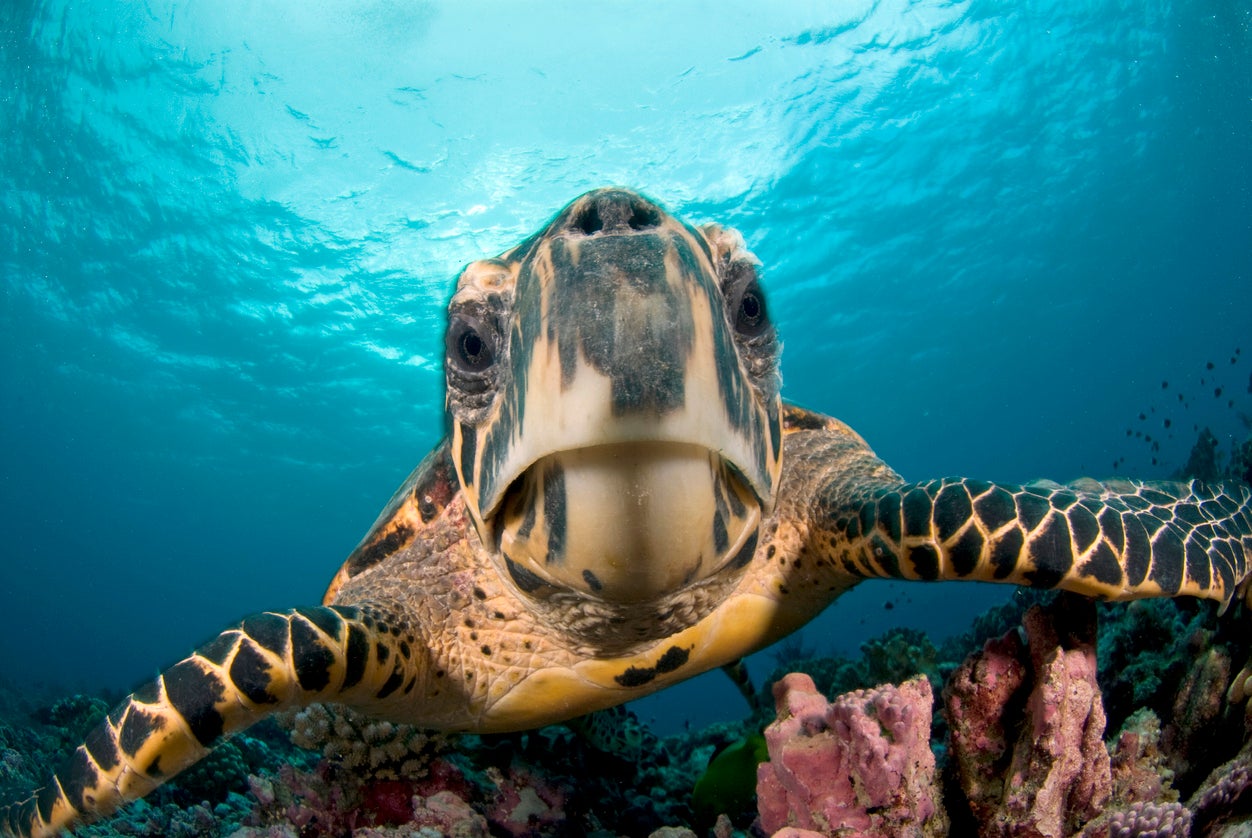Migrating turtles have limited sense of direction, study finds
One turtle scientists tracked swam more than 800 miles to reach an island just 100 miles away

Your support helps us to tell the story
Our mission is to deliver unbiased, fact-based reporting that holds power to account and exposes the truth.
Whether $5 or $50, every contribution counts.
Support us to deliver journalism without an agenda.

Louise Thomas
Editor
Some migrating sea turtles don’t know where they are going, new research suggests, with one of the creatures swimming more than 800 miles to reach an island just 100 miles away.
An international team of scientists tracked the behaviour of 22 hawksbill turtles as they swam across the Indian Ocean.
They found that the turtles often swam via indirect routes and typically travelled twice the distance needed to get to their next location.
The navigation and migration patterns of animals in the ocean have for many years puzzled scientists and biologists, including Charles Darwin.
The report authors said that sea turtles often migrate to different places in order to forage, mate and nest, but the new study suggests that they have a “relatively crude map sense in the open ocean”.

Professor Graeme Hays, chair in marine science at Deakin University and the study’s first author, told The Guardian that the turtles his team observed didn’t eat for prolonged periods of time as a result of their undirected travelling.
Professor Hays said the research suggested that the turtles “almost certainly are using a geomagnetic map” – a map that relies on or relates to the magnetic field of the Earth.
“So, it doesn’t allow pinpoint straight-line migration, but it does tell them when they’re getting a long way off route,” Prof Hays said.

Despite the new study suggesting the turtles’ geomagnetic map may not be reliable enough to target specific locations, the animals will later rely on other means to get to their destination.
“In the final stages, they can smell an island that they’re headed to,” Prof Hays said.
“As they get some sort of visual landmark – for example, the water starts to get a bit shallower and they can see the seabed – then they’ve probably got some sort of cognitive map of that area.
“They could probably just recognise the sea floor, just like you would recognise visual landmarks in the area where you live.”
Hawksbill turtles also face navigational difficulties when the islands or submerged banks they are looking for are small or remote.
The research was published in the Journal of the Royal Society Interface.
Subscribe to Independent Premium to bookmark this article
Want to bookmark your favourite articles and stories to read or reference later? Start your Independent Premium subscription today.
Join our commenting forum
Join thought-provoking conversations, follow other Independent readers and see their replies
Comments